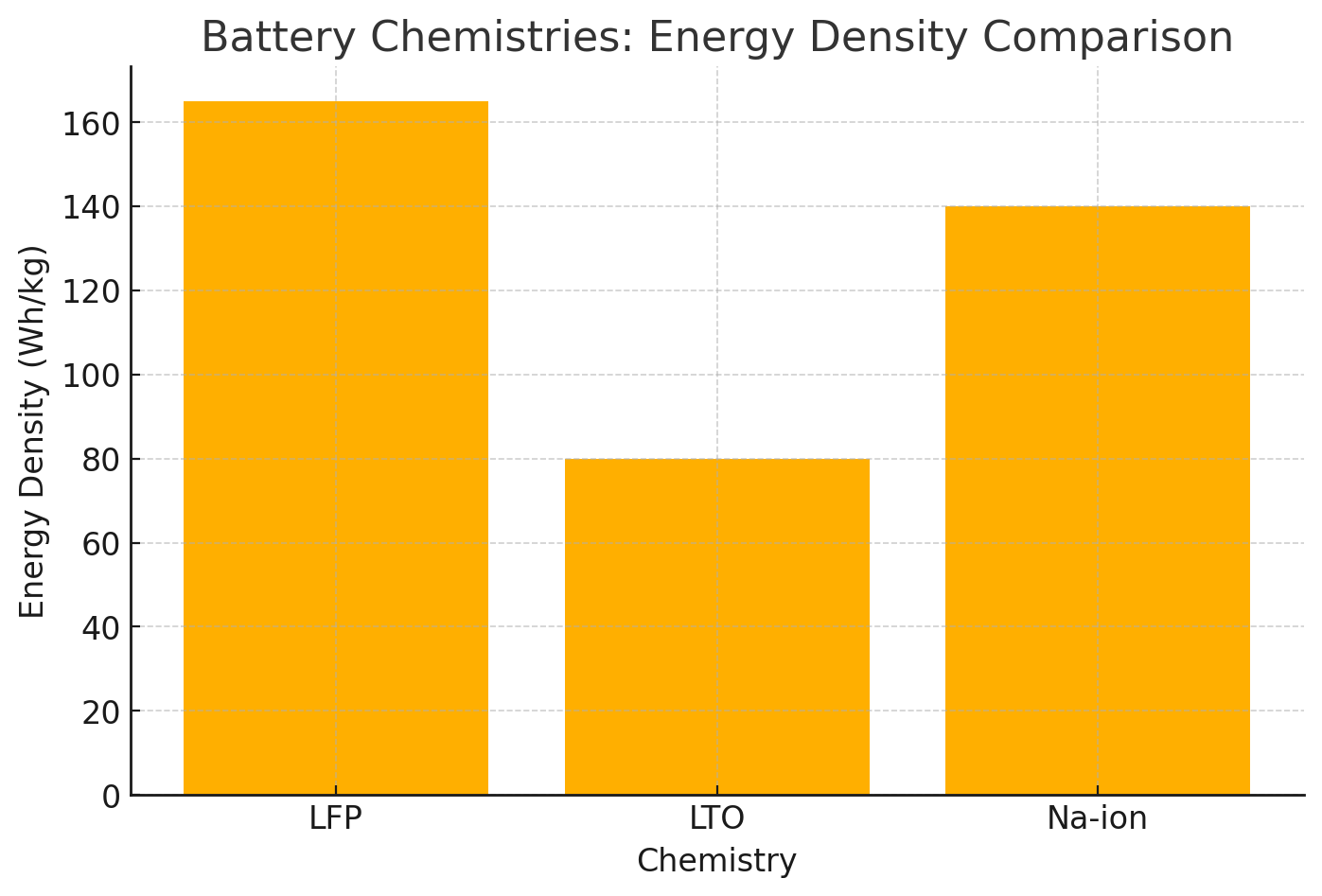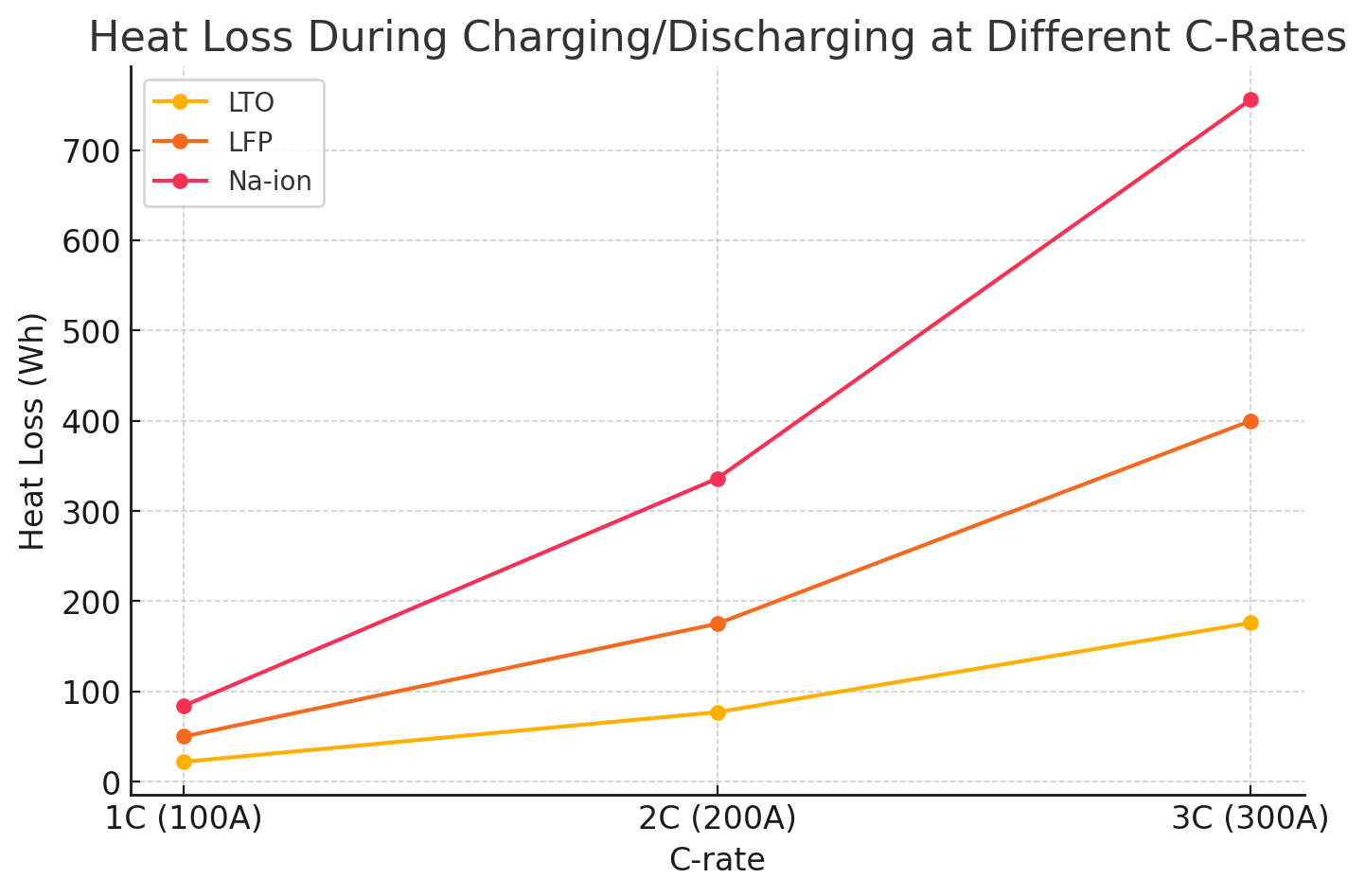Battery C-Rates Explained: LFP, LTO, and Sodium-Ion Performance at 1C, 2C, 3C
At PHOTONGRILL.com, we love exploring innovative energy solutions, and batteries are at the heart of it. Understanding C-rate, which describes how fast a battery is charged or discharged, is crucial for designing safe and efficient systems. Today, we’ll compare three popular chemistries: Lithium Iron Phosphate (LFP), Lithium Titanate (LTO), and Sodium-Ion (Na-ion), and see how they perform at 1C, 2C and 3C rates.
What is C-rate?
C-rate is a way to measure battery current relative to its capacity:
- 1C = discharge or charge at a current equal to the battery’s capacity in 1 hour
- 2C = discharge or charge in half an hour
- 3C = discharge or charge in 20 minutes
For example, a 12V 100Ah battery at 1C delivers 100 A, at 2C it delivers 200 A, and at 3C it delivers 300 A.
Battery Chemistries Overview
| Chemistry | Typical Nominal Voltage | Energy Density | Main Strength |
|---|---|---|---|
| LFP | 12.8 V | 150–180 Wh/kg | Safe, long-life, moderate power |
| LTO | 11.0 V | 70–90 Wh/kg | Ultra-fast charge/discharge, very long life |
| Na-ion | 12.0 V | 120–160 Wh/kg | Low-cost, abundant materials, moderate power |

Heat Loss During Charging/Discharging
Not all energy goes into useful work — some is lost as heat due to internal resistance and voltage inefficiencies. Here’s how our 12V 100Ah battery performs at different C-rates:
| C-rate | LTO Heat | LFP Heat | Na-ion Heat |
|---|---|---|---|
| 1C (100A) | ~22 Wh (2%) | ~50 Wh (4%) | ~84 Wh (7%) |
| 2C (200A) | ~77 Wh (7%) | ~175 Wh (14%) | ~336 Wh (28%) |
| 3C (300A) | ~176 Wh (16%) | ~400 Wh (31%) | ~756 Wh (63%) |

Observation:
- LTO handles high currents with minimal heat — perfect for fast-charging and high-power applications.
- LFP is moderate — works well at 1–2C, but 3C requires active cooling.
- Na-ion efficiency drops quickly at >1C–2C, generating significant heat and needing thermal management.
Practical Implications
- Energy Efficiency
- At 1C, Na-ion loses more energy as heat than LFP and LTO.
- LTO is nearly lossless at typical currents.
- Thermal Management
- Na-ion needs careful cooling above 2C.
- LFP may require moderate cooling at 3C.
- LTO often runs cool even at 3C.
- Application Suitability
- LTO: EVs with ultra-fast charging, industrial power tools, high-power UPS.
- LFP: Electric cars, solar storage, general-purpose energy storage.
- Na-ion: Grid storage, stationary renewable energy, cost-sensitive projects.
Conclusion
C-rate dramatically affects battery performance and heat generation:
- LTO: Best for high C-rate and long cycle life.
- LFP: Balanced performance, widely used.
- Na-ion: Promising low-cost alternative, excellent for 1C, emerging technology for 2C applications.
At PHOTONGRILL.com, we recommend choosing your battery chemistry based on application, power requirements, and thermal management capabilities.
⚡ Tip: Always consult manufacturer specifications — Na-ion and LTO are newer technologies with varying performance depending on exact cell chemistry.